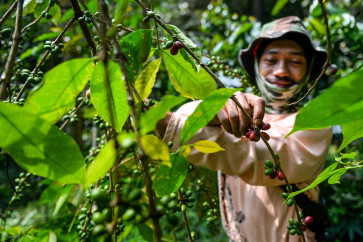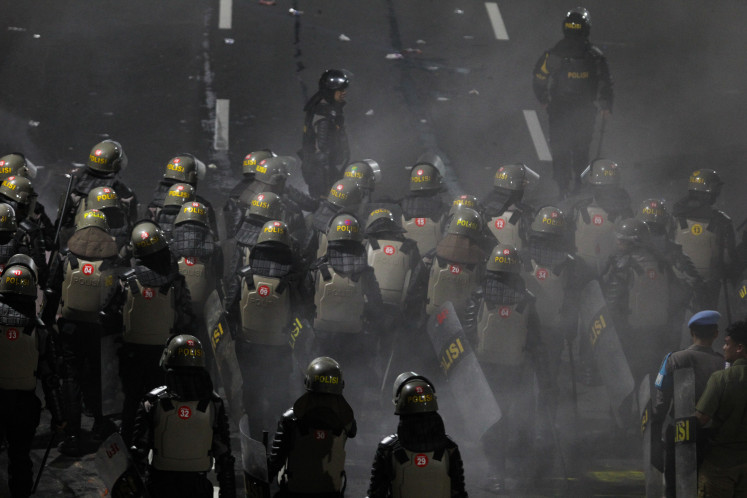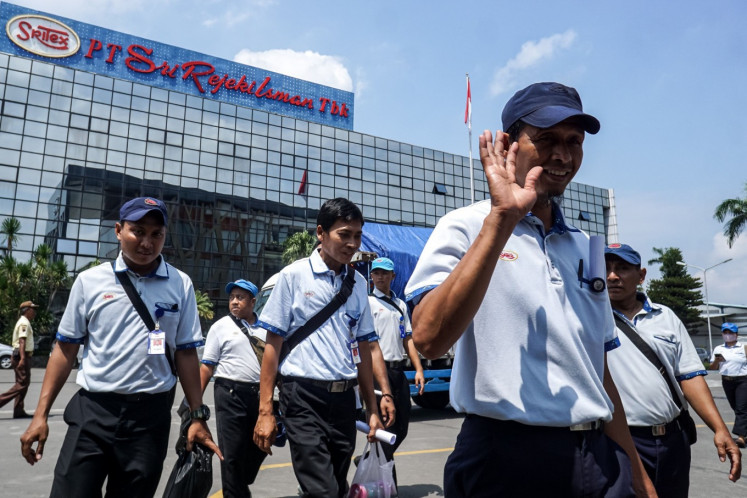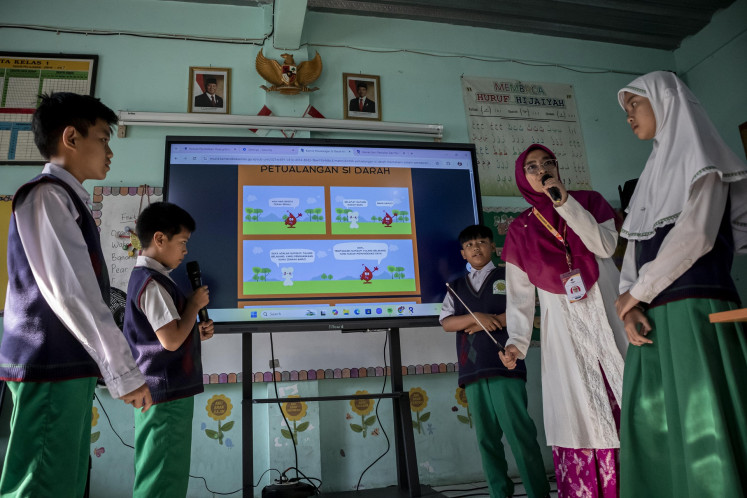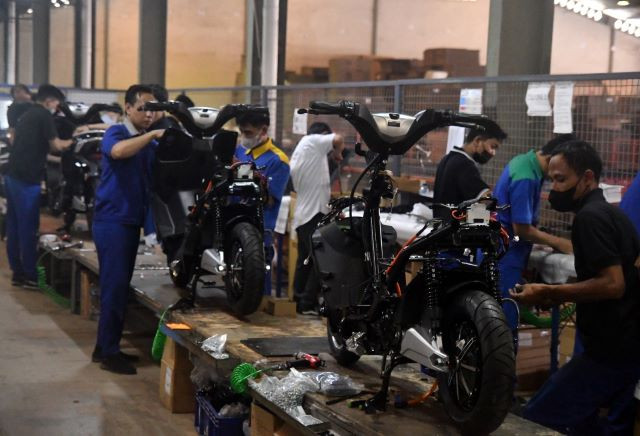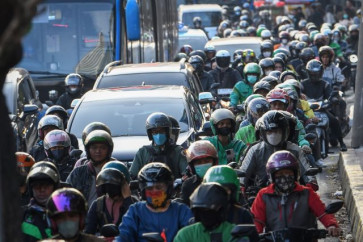Quick-win in the fight against Jakarta air pollution
Even when comfortable sidewalks, protected bicycle lanes, and para-transit feeders are available, many people are reluctant to shift to public transportation.
Change text size
Gift Premium Articles
to Anyone
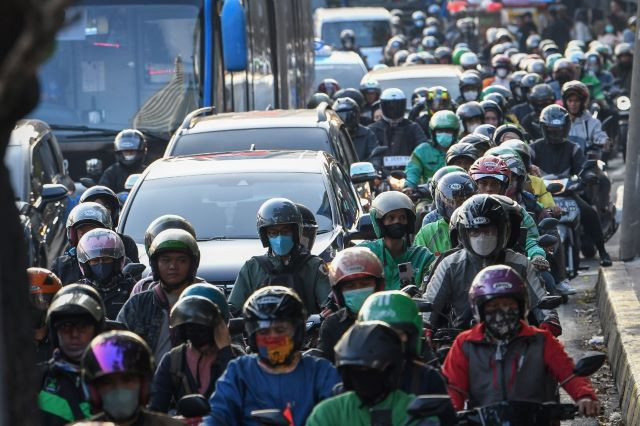 Smoky trail: Motorcyclists compete for space on Aug. 24, 2023 in bumper-to-bumper congestion on Jl. Gatot Subroto in South Jakarta. Data from the Environment and Forestry Ministry shows that the transportation sector contributes 96.36 percent to Jakarta’s carbon dioxide output. (Antara/Aditya Pradana Putra)
Smoky trail: Motorcyclists compete for space on Aug. 24, 2023 in bumper-to-bumper congestion on Jl. Gatot Subroto in South Jakarta. Data from the Environment and Forestry Ministry shows that the transportation sector contributes 96.36 percent to Jakarta’s carbon dioxide output. (Antara/Aditya Pradana Putra)
Jakarta and its satellite cities have endured severe and chronic air pollution for the last three decades. The impact of the poor air quality has burdened citizens of the agglomeration region, given that its level exceeds the tolerable limit set by both the national and World Health Organization (WHO).
Just recently the Swiss company IQAir released its data classifying Jakarta’s air quality as the worst in the world. More than 30 years earlier, a United Nations Environment Program (UNEP) report showed that Jakarta was the city with the dirtiest air in the world after Mexico City and Bangkok. For three decades Jakarta’s people have breathed unhealthy air.
A study (KPBB, 2019) found a high prevalence of respiratory symptoms among Jakarta residents with 1.4 million cases of asthma, 200,000 cases of bronchitis, 172,000 cases of Chronic Obstructive Pulmonary Disease (COPD), 2.7 million cases of Acute Respiratory Infection and 1.3 million cases of coronary artery diseases. The medical costs stood at Rp 51.2 trillion (US$3.4 billion) per year.
Another study also found that 15.4 percent of deaths in Jakarta were caused by vehicular air pollution (Anenberg et al. 2019). A subsequent study (Vital Strategies, 2020) estimates that air pollution in Jakarta potentially causes more than 10,000 deaths, and 5,000 hospitalizations for cardiorespiratory diseases each year, along with more than 7,000 adverse outcomes in children, which costs more than $2.9 billion annually.
Annual exposure to PM2.5 potentially caused over 10,000 premature deaths in 2019, including 330 infant deaths. Air pollution also potentially results in adverse birth outcomes in 700 infants, as well as 6,100 cases of stunting.
Currently, the annual mean concentration of air pollution in Jakarta for the dominant parameters PM10, PM2.5, O3, and SOx exceed the safe standards, reaching 59.03 micrograms of gaseous pollutant per cubic meter of ambient air (µg/m3), 46.1 µg/m3, 83.3 µg/m3 and 42.76 µg/m3, respectively (2022). Various studies show that land transportation is the biggest polluter in Greater Jakarta, followed by sources from industry, domestic use, road dust, open-waste burning, construction process and transboundary pollutants.
Solving the air pollution problem must top the priority list of the government, given its impact on public health, which only cancels out the achievements of economic development. National regulations urge strict and consistent implementation of air quality management in the sectors of transportation, industry, energy generation, mining, construction, land/forest management, waste processing, etc. But do they work?




